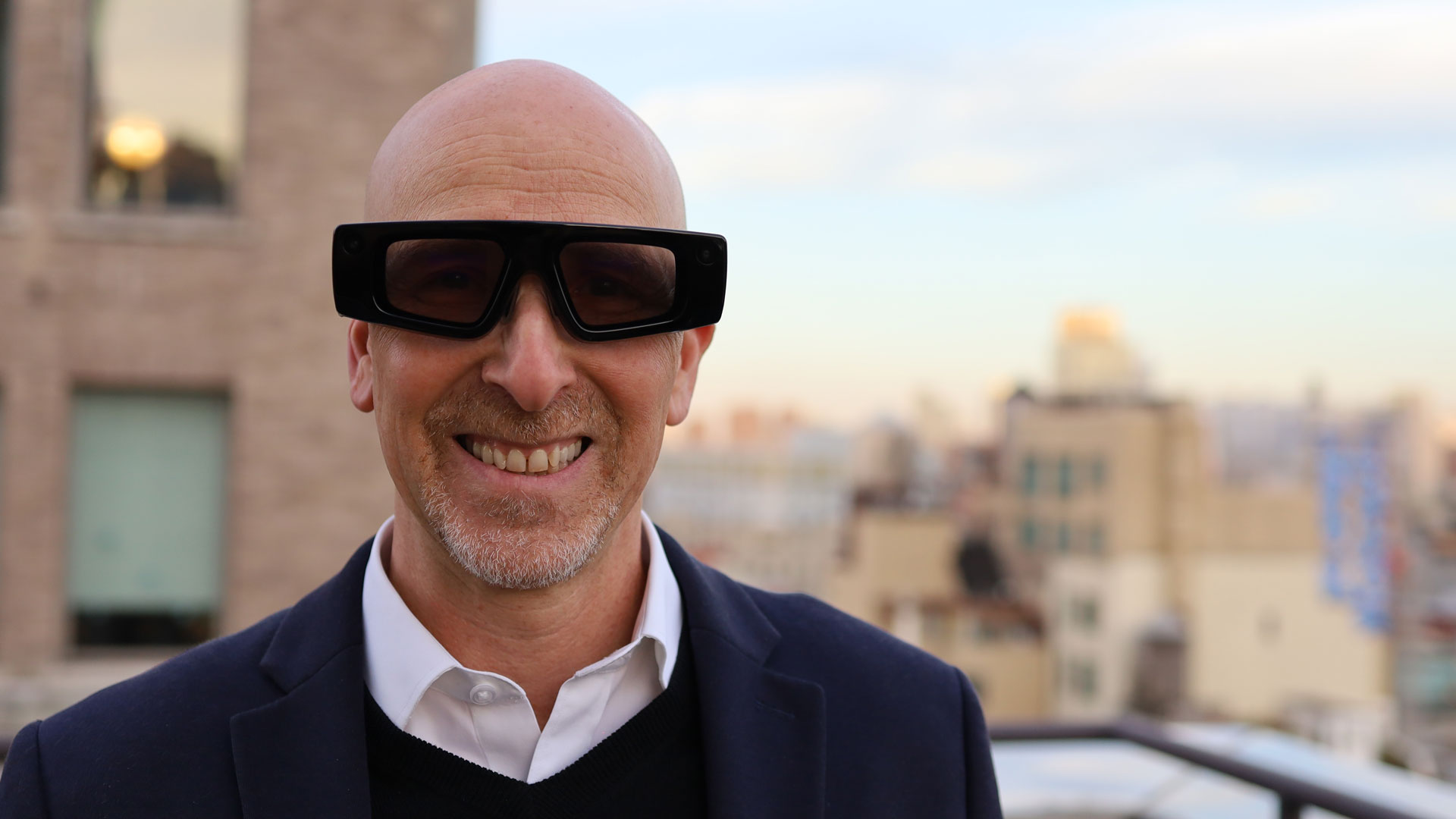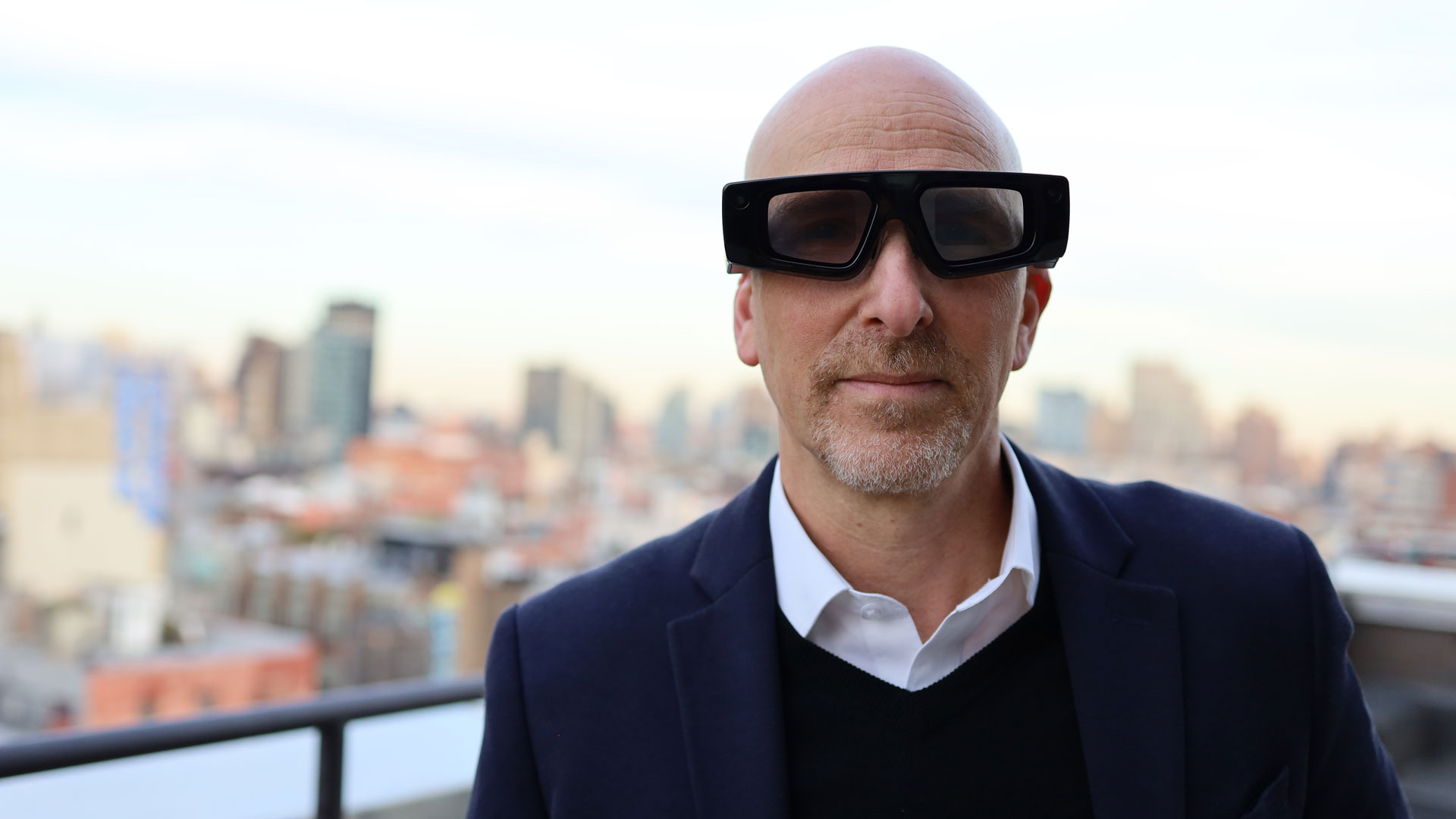
“Wow, they look bigger in person,” was my first thought upon finally seeing, touching, and ultimately wearing and trying Snap’s fifth-generation AR Spectacles, which were first unveiled in September by Snap CEO Evan Spiegel.
In the race to get augmented reality glasses on our faces, Snap, creator and owner of Snapchat, might be in the lead. Its AR glasses are available to developers today for a $99-a-month subscription. The idea is that they’ll use this time and Snap Studios to build AR experiences on Snap OS.
That puts Snap Spectacles at least a step or two ahead of Meta’s remarkable Orion AR glasses that I tried last month, as they are not available to anyone outside of Meta. And the timeline for their delivery is 2027, if we're lucky.
So, Snap Spectacles gets a big atta boy for dashing out of the gate. Still, there are undeniable differences between my Spectables and Orion experiences, which make it clear why the latter may be taking a slower and slightly more cautious approach.
This is not to say that Spectacles are anything less than exciting and entertaining. I wore a pair for roughly 20 minutes and thoroughly enjoyed it. Before we get into those experiences, let’s dig into the gritty Spectacle 5 details.





The largish black glasses (more like goggles, if we’re being honest) weigh about 226 grams – about half the weight of Meta Quest 3s and more than twice that of Meta Orion – and run for an estimated 45 minutes on a charge. A pair of Qualcomm Snapdragon chips power them, though Snap won’t say which ones.
For the all-important visuals, Snap combined liquid crystal on silicon projector technology in the stems with waveguides on the virtually transparent displays to focus the AR projections in front of your eyes. It’s a pretty good effect and, for the most part, stands toe-to-toe with Meta’s Orion glasses except in one key aspect: field of view.
Throughout my experience, I noticed that the AR effects stopped well short of my peripheral vision. This was a shame because it tended to break what was otherwise a powerful, combined reality and computer-generated effect.
Even so, I was impressed with the various experiences.

To wear Snap Spectacles, you run through a brief in-app check of your pupillary distance using an iPhone. One of the Snap reps held his phone in front of my face. Then, I removed my glasses, and the app instantly read my measurements and delivered the info to the connected Snap Spectacles. Aside from that the only other adjustment that we needed was the addition of some prescription lens inserts (they guessed at my prescription).

Snap Spectacles are fully aware of your environment thanks to two cameras on the front and two on the bottom edge of the rims that point at your hands. Hand tracking is critical because that’s how you’ll control Spectacles' Snap OS interface.
During the initial setup, the app shows you some floating bubbles, and floating AR text tells you to look at them and pinch and grab each one. This is easy to do and quite entertaining. I intuitively grabbed and squished each one. Next, a cute jellyfish appeared. I grabbed it, squished it, and shook it around. I then pinched on both sides of the virtual Cnidaria and pulled to make it larger. When I let go, the jellyfish floated away.
Sometimes, the interface is slightly less intuitive because it’s not controlled by where you look but by where your hands and fingers are. I had to remind myself to look up at what I wanted to interact with, mainly to put it in frame so I could point at it and pinch to grab or move.

The menu is in the palm of your hand, literally. If you turn your palm up and look at it, the menu appears. When I flipped over my hand, a control panel appeared on the back of it. Larger menu options floated in front of my face. As with other mixed reality systems, I could look at the edge of a window, grab the bottom edge, and drag the window closer to me.
We used a drawing app to create wild 3D designs all around the room. This can be a group app in that if there’s someone else nearby with Spectacles and the app, you can draw together. The app sometimes had trouble keeping track of my fingers, which I pinched to draw, and sometimes the artwork would drift as I drew.

I also played a virtual album by selecting a song and dropping a red platter on a turntable. I struggled to get the armature and needle on the record, but I eventually heard the scratch of a recording and clear music delivered to my ears – a neat effect.
Perhaps the most impressive demonstration was the piano lesson. I sat before a real piano and learned how to play a few notes and a simple song with the assistance of AR. The app guided me to look at the real keyboard, and then Spectacles 5 highlighted which keys I should play and in what sequence. It started slow and then labeled keys floated toward the keyboard and my fingers as I tapped each key. This may be one of the best AR use cases I have ever seen.



Snap will, of course, leverage core Snapchat features, including in-app video calls. In our demo, we used Snapchat to call someone wearing Snap Spectacles. We could see her POV, and while the poor WiFi throughput never let her see us, she could see when we circled a lamp in her field of view. She could also see the virtual arrows we dropped in front of her to guide her journey. That could come in handy when a friend is lost and needs quick directions to your place.

After my demo session, I came away impressed with my demo but also relieved to take the glasses off. They’re just not comfortable, and I’m convinced Snap will have to do something about the relatively narrow field of view before bringing Spectacles 5 to market.
On the other hand, in some limited ways, like the drawing game and piano lessons, this is a promising demo and platform. I can already see the potential and am certain Snap Studio developers are inspired by the possibilities. It remains to be seen how Snap Chat’’s 850 million users will feel about it, but assuming the level of integration remains high, this will surely someday be their AR glasses of choice.
@techradar ♬ BETA 777 - beaty
You might also like
- I tried the Ray-Ban Meta Smart Glasses' newest AI features, and they're about to become a much better – and cooler-looking – companion
- Meta might soon cut the Meta Quest 3 price and discontinue the ...
- Meta Connect: 5 things I want to see at what's set to be the ...
- Meta Quest 3S: everything we know about the leaked cheap VR ...
- Meta showcases the hardware that will power recommendations for ...
- Pico 4 Ultra VS Meta Quest 3: the battle of the best mid-range VR ...







